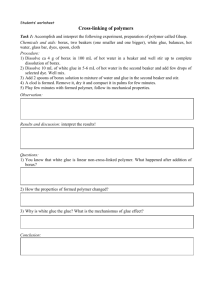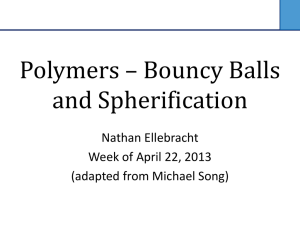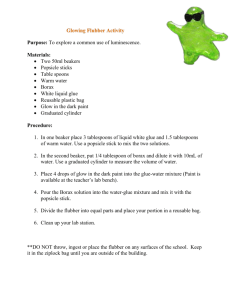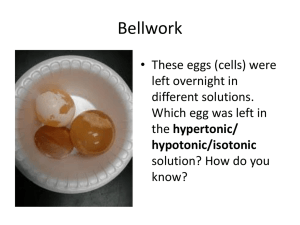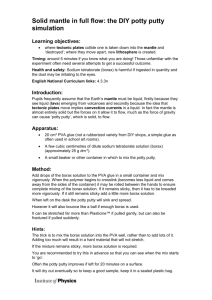Activity Template
advertisement
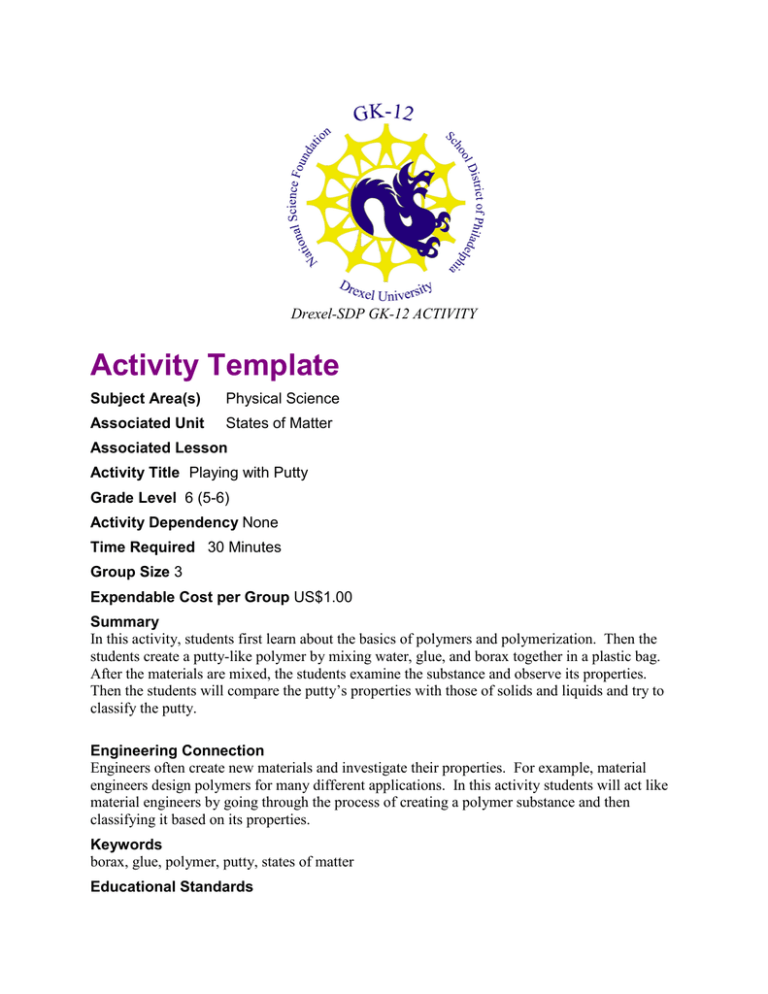
Drexel-SDP GK-12 ACTIVITY Activity Template Subject Area(s) Physical Science Associated Unit States of Matter Associated Lesson Activity Title Playing with Putty Grade Level 6 (5-6) Activity Dependency None Time Required 30 Minutes Group Size 3 Expendable Cost per Group US$1.00 Summary In this activity, students first learn about the basics of polymers and polymerization. Then the students create a putty-like polymer by mixing water, glue, and borax together in a plastic bag. After the materials are mixed, the students examine the substance and observe its properties. Then the students will compare the putty’s properties with those of solids and liquids and try to classify the putty. Engineering Connection Engineers often create new materials and investigate their properties. For example, material engineers design polymers for many different applications. In this activity students will act like material engineers by going through the process of creating a polymer substance and then classifying it based on its properties. Keywords borax, glue, polymer, putty, states of matter Educational Standards • • Science: 3.2B, 3.4A Math: Pre-Requisite Knowledge Learning Objectives After this lesson, students should be able to: • Define polymer and list some common polymers • Relate the properties of a putty polymer to those of a solid or liquid Materials List Each group needs: • Borax powder • Elmer’s glue • Water • Zip-loc bag • Measuring cups, 1 cup, 1 tablespoon, 1 teaspoon • Food coloring • Straw for mixing • Small bowl To share with the entire class: • Introduction / Motivation Polymers are all around us and they come in all kinds of shapes and sizes. Does anyone know what a polymer is? Soda bottles, plastic bags, Styrofoam, rubber, and even things like DNA and silk are polymers. Polymer is a word that comes from two root words, poly, meaning many, and meros, meaning parts. Polymers can be natural, like DNA or silk, or synthetic, like Styrofoam and plastics. However, all polymers are similar in that they are made or many repeating pieces. Today we will be making a synthetic polymer that is similar to Silly Putty. We will make the polymer by mixing together, glue, water, and borax. Borax is a chemical used for cleaning, but we will use it today as an ingredient in our polymer. After we make our polymer we will investigate its properties and try to determine if it is a solid or a liquid. Vocabulary / Definitions Word Definition Polymer A large molecule made up of repeating units. Borax A compound of the element Boron commonly used in detergents. Procedure Background You may want to go through the procedure on your own beforehand so you can troubleshoot any problems the students may have. Before the Activity • Measure out 1 tablespoon of borax powder for each group and place it in the small bowl • Prepare the rest of the material for each group 2 With the Students 1. Divide the class into groups of three. 2. Give out the materials to each group. 3. Have the students put 1 cup of water into the bowl with borax and mix with the straw. 4. Have the students add one tablespoon of glue, one teaspoon of water, and a drop of food coloring into the bag. 5. Next tell the students to add one tablespoon of the borax mixture to the bag and mix all the components together for a few minutes. 6. Have the students record their observations. How does the substance look? Feel? Does it bounce? Does it hold its shape? 7. Tell the students to make a table with two columns, one for solids and one for liquids. They should list all the properties they know for each, then circle any property that the putty shares. 8. The students can write a paragraph about whether they think the putty is a solid or liquid and why? Safety Issues • Borax should not be ingested; hands should be washed after the activity. Troubleshooting Tips The mixture might be too watery inside the bag. It may be necessary to try and separate the solids from the water to clump all the solids together. Assessment Activity Embedded Assessment Lab Notebook: The student’s lab notebook should contain their observations as well as a chart and answers to the questions. Post-Activity Assessment Lab Report: Students should write a lab report clearly stating, their procedure, results, and discussion. Owner Drexel University GK-12 Program Contributors Ben E. Pelleg, ECE Department, Drexel University Copyright Copyright 2008 Drexel University GK-12 Program. Reproduction permission is granted for nonprofit educational use. 3
